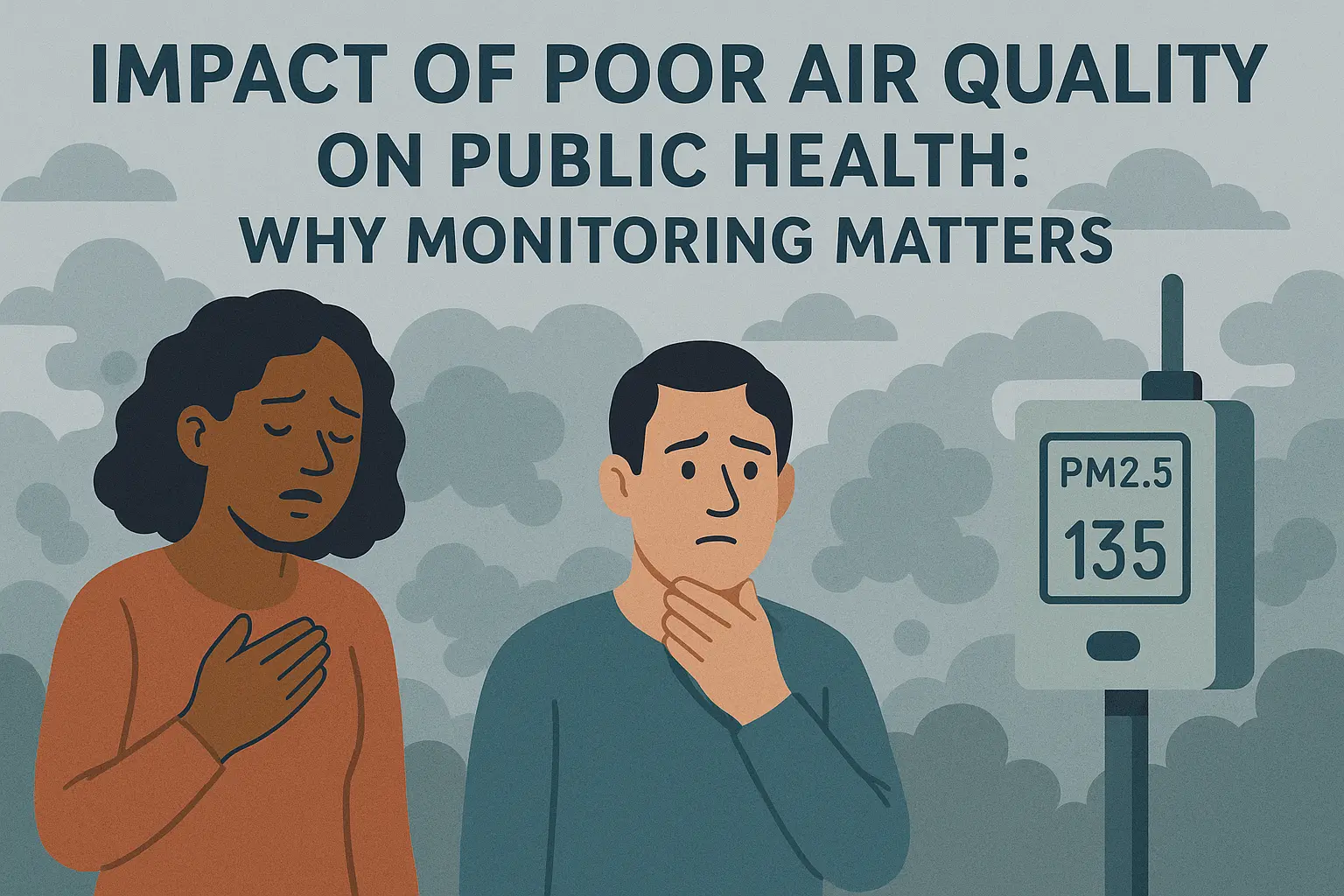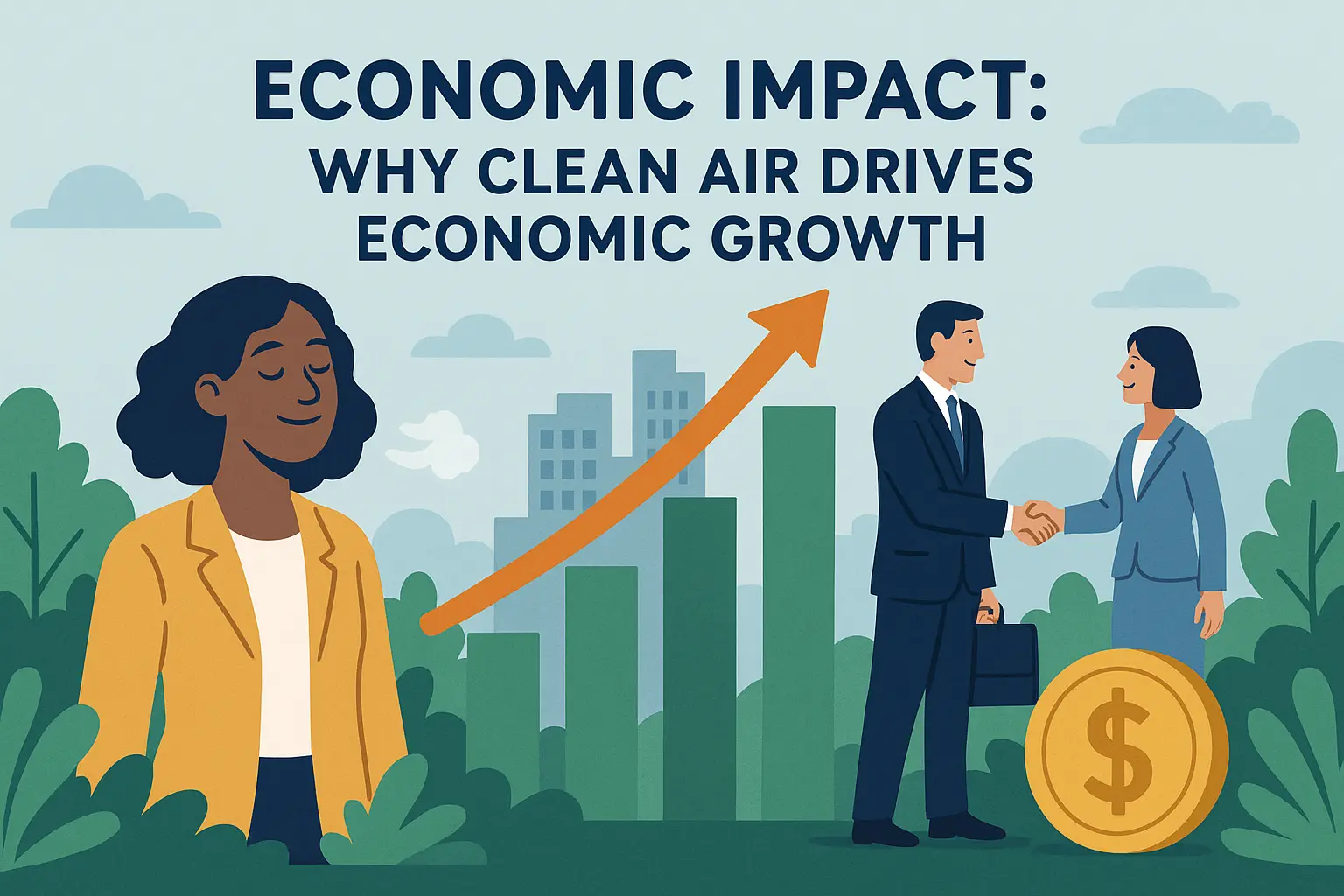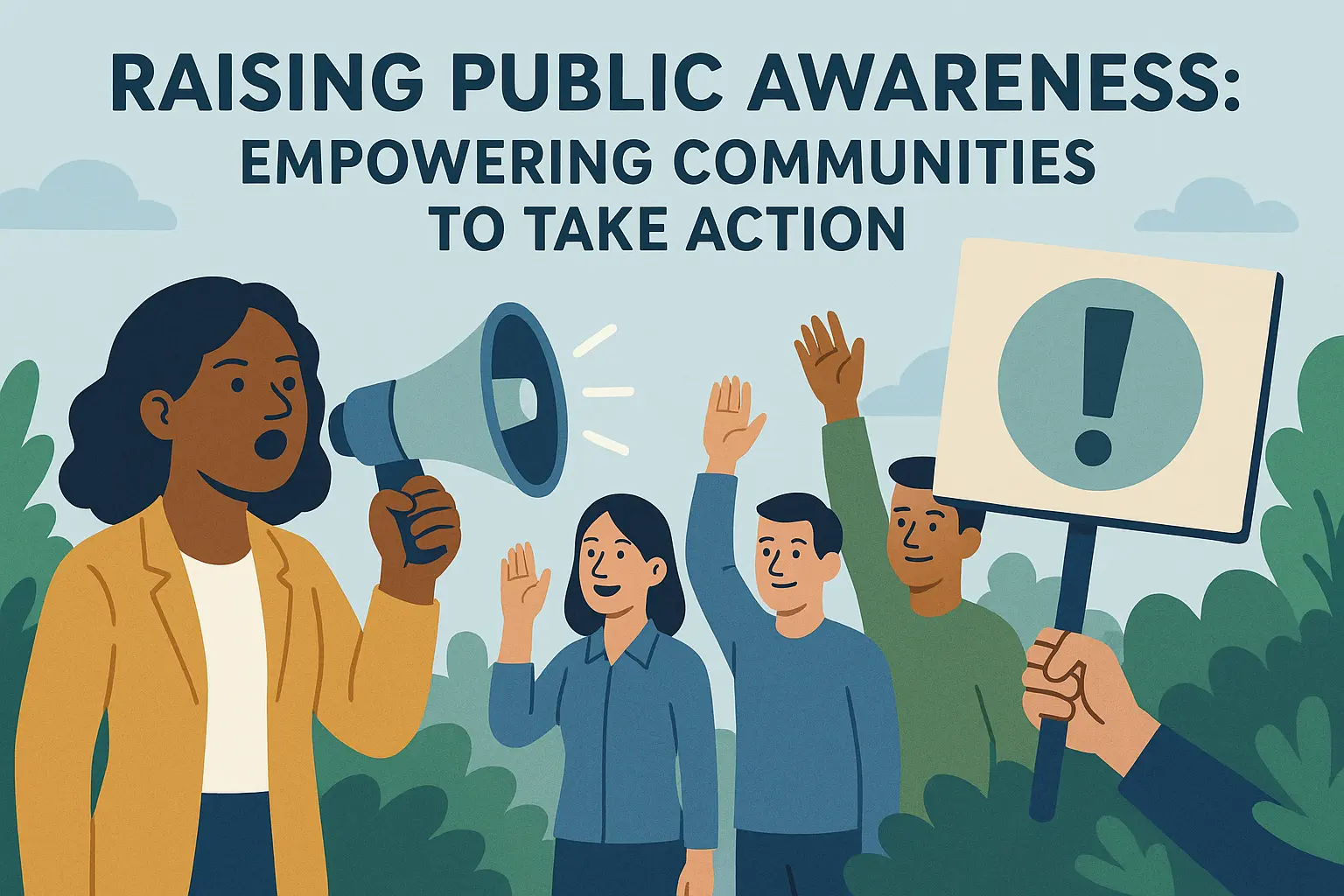is an important way to support sustainable development and protect public health. Because it gives us the data we need to cut down on pollution, fight climate change, and build healthier communities. Sustainable development means taking care of our needs today without preventing future generations from meeting their own needs. Air quality plays a big part in this because it affects our health, the environment, and the economy.
1. Impact of Poor Air Quality on Public Health: Why Monitoring Matters
Air pollution is a major global health risk. It causes millions of premature deaths every year. The World Health Organization (WHO) says about 7 million people die each year because of air pollution.

Monitoring air quality helps us understand these risks. It also helps us find ways to reduce pollution, especially in cities, where pollution levels can be very high.
- Fact: Air pollution can shorten life expectancy by up to 1.8 years. (Source: State of Global Air 2019)
By monitoring air quality all the time, we can see pollution levels right away. Moreover, this lets governments and health groups give warnings, protect vulnerable groups (like children and older adults), and help prevent diseases caused by dirty air.
2. Environmental Impact: Protecting Ecosystems with Air Quality Data
Some pollutants, like nitrogen oxides (NOx) and sulphur dioxide (SO₂), cause acid rain. Hence, this rain harms soil, rivers, and plants.

Another type of pollution, called particulate matter (PM2.5), can cover plants with tiny particles. As a result, this blocks sunlight, slows down photosynthesis, and makes it harder for plants to grow. Besides, it can also lower biodiversity, which means fewer types of plants and animals. This hurts ecosystems and farms.
- Fact: Air pollution reduces global crop yields by up to 10% every year, causing big economic losses. (Source: Food and Agriculture Organization)
By monitoring air quality all the time, we can see where and how pollution is happening. As this helps us protect forests, soil, water, and biodiversity—all of which are important for a sustainable future.
3. Linking Air Quality and Climate Change: How Monitoring Can Help
Some air pollutants, like black carbon (a part of particulate matter) and methane, also cause global warming. These are called climate forcers because they heat the Earth’s atmosphere. By monitoring air quality, we can find out where these pollutants come from. This helps policymakers take action to reduce both air pollution and climate change at the same time.
- Fact: Black carbon causes about 25–30% of global warming, making it a key focus for climate action. (Source: Intergovernmental Panel on Climate Change, IPCC)
When we combine data of air quality and greenhouse gas emissions, countries can make better plans. And these plans protect the environment and slow down climate change. Hence, this is an important step toward a sustainable future for everyone.
4. Economic Impact: Why Clean Air Drives Economic Growth
When the air is polluted, workers don’t perform as well, healthcare costs go up, and things like roads and buildings get damaged. To emphasize, the World Bank says air pollution costs the world about $5 trillion each year. This includes money spent on healthcare and the lost money when people get sick and can’t work.

- Fact: In the U.S., bad air costs $131 billion every year because of lost productivity. (Source: American Lung Association)
By monitoring air quality, governments can find the worst pollution areas, make rules to reduce it, and help create cleaner industries. Since, taking care of air quality helps people stay healthy and saves money, building a stronger economy.
5. Data-Driven Policy Making: Shaping a Sustainable Future
Air quality monitoring gives us the data to create important rules. These rules can limit pollution from factories, create clean areas in cities, and encourage the use of clean energy.
- Fact: In Beijing, better monitoring and stricter rules have reduced air pollution by 30% in the last few years. (Source: United Nations Environment Programme)
By using air quality data, we can make smarter city plans, set clear pollution limits, and push for cleaner technologies. This helps us build a better, more sustainable future.
6. Raising Public Awareness: Empowering Communities to Take Action
This information helps people make better choices for their health, like staying indoors during high pollution or using air purifiers at home.

- Fact: Studies show that when people know the air is bad, they’re more likely to do things like exercise less outdoors or use low-emission transport. (Source: Environmental Health Perspectives)
Real-time air data also encourages people to support better environmental rules. When they know the dangers of air pollution, they’re more likely to ask for cleaner air and take part in eco-friendly actions. This helps make sustainability efforts successful.
7. Building Resilient Communities: Reducing Vulnerabilities to Pollution
Some communities, especially those near factories or busy roads, have more air pollution. By checking air quality in these areas, we can help protect these people.
- Fact: In the U.S., poor and minority communities have 50% more pollution than wealthier, mostly white areas. (Source: American Lung Association)
Air quality monitoring helps these communities get better rules and safer places to live. Thus, this makes sure that everyone is treated fairly and has clean air to breathe.
8. Global Cooperation for Sustainable Development Goals (SDGs)
Air quality monitoring is important for reaching key United Nations Sustainable Development Goals (SDGs), like:
- SDG 3 (Good Health and Well-being), SDG 11 (Sustainable Cities and Communities, and SDG 13 (Climate Action)
By tracking air pollution and sharing this information between countries, we can all work together to reduce pollution and reach these global goals.
- Fact: The World Health Organization (WHO) says air pollution is the biggest environmental risk to health. It causes 1 in 8 deaths worldwide. (Source: WHO)
When countries work together on air quality monitoring, they can take action to improve both the environment and health. Focusing on clean air helps us all reach the SDGs and create a healthier, cleaner world.
Conclusion: Air Quality Monitoring as a Pillar of Sustainable Development
Air quality monitoring is very important for a better future. It helps us:
- Reduce pollution
- Protect health
- Fight climate change
- Build a strong economy
Air pollution harms our health and the planet, so we need to monitor it. This helps create good rules, raise awareness, and encourage countries to work together.
For a cleaner and healthier world, we must include air quality monitoring in everything we do.
Using real-time air quality data can help us reduce pollution, improve life for everyone, and create a sustainable future. Focusing on air quality helps protect health and reach long-term goals.